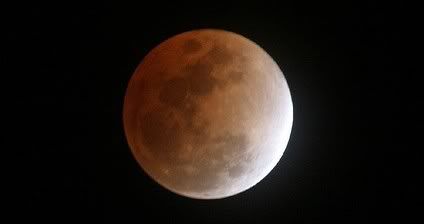Bright Moon, Warm Earth?
/https://tf-cmsv2-smithsonianmag-media.s3.amazonaws.com/filer/db/f1/dbf1602c-754a-458f-9523-2b9d099c739d/lunar_eclipse_january_31_2018_california_alfredo_garcia_jr_mideclipse.jpg)
Tragically, and even despite a phone call reminder from a friend, I forgot to look at the lunar eclipse on February 20 (and won't get another chance to see one until December 2010). When later perusing this great collection of eclipse photos, I was surprised to see that it glowed red.
During a lunar eclipse, the Earth lies directly between the Moon and the Sun, thus blocking the Sun's rays from directly hitting the Moon. Some light does hit the Moon, but only after getting refracted through the Earth's atmosphere. The atmosphere is filled with low levels of volcanic dust. The less dust in the atmosphere, the brighter the Moon looks during an eclipse. Since few large volcanoes have erupted in the last decade, our recent eclipses have all been fairly luminous.
Richard Keen at the University of Colorado, Boulder thinks that these recent low levels of volcanic dust have contributed to global warming—as much as 0.2 degrees Celsius. This theory is extremely controversial, as pointed out in a news article posted today on NewScientist.com.
Most climate scientists, including authors of the mammoth IPCC report, say that the 0.6-degree Celsius rise in Earth's temperature over the last 50 years is due almost entirely to greenhouse gases released by humans. In fact, if you look back over the last 40 years, volcanic dust levels have actually been higher than the 20 years before that, Susan Solomon of the US National Oceanic and Atmospheric Administration told New Scientist.
Wired blogger John Borland doesn't put too much stock in Keen's results:
There's almost no question that this is going to stir up the climate-change deniers. So, before people get too excited, and claim that all this global warming is happening because we're just going through a period of low volcanic activity– read the IPCC reports.
I'm less concerned about how the climate change deniers will use Keen's data. Even if he's right (and he may be right—the volcanic dust levels have been extremely low since 1995, allowing in lots of extra sunshine that could be heating the oceans, etc.), there'd still be 0.4 degrees of warming to account for. And the human use of fossil fuels would still be the most likely culprit.

(Flickr, by Savannah Grandfather)